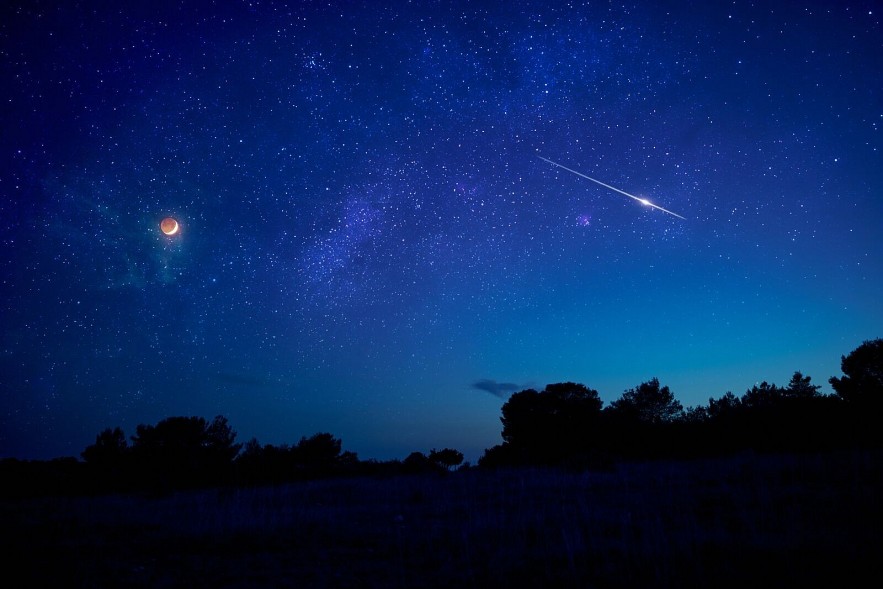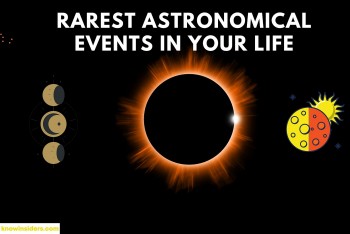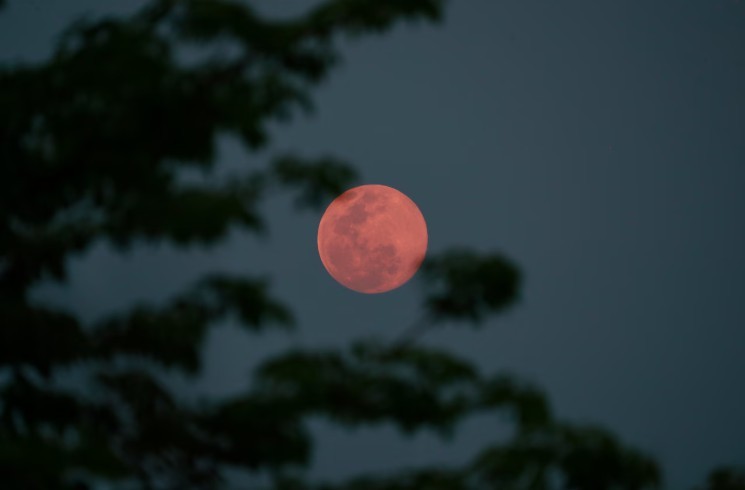Astronomical Events In January 2024 and Influence on 12 Zodiac Signs
 |
| The Big Astronomical Events In January 2024 and Influence on 12 Zodiac Signs |
| Table of Contents |
Every year delivers a new set of solar, lunar, and planetary occurrences, and 2024 is no exception. However, this year is significant for a number of unusual events that occur only every few years or that many of us will only see once or twice in our lives.
Many of these events will include Mars, which will pass close to each of its siblings in the following months. Unfortunately, you'll have to get up early to witness many of these occurrences, because while Mars will become brighter throughout the day, it will be best visible in the hours before dawn and won't return to the evening sky until the end of the year.
Big Astronomical Events in January 2024
In January 2024, there will be several significant astronomical events:
Last Quarter Moon: Wednesday, January 3, 2024, at 19:31 PST (03:31 UTC).
Thursday, January 11, 2024, at 03:58 PST (11:58 UTC).
The first quarter begins on Wednesday, January 17, 2024, at 19:53 PST (03:53 UTC).
Full Moon: Thursday, January 25, 2024, at 9:53 a.m. PST (17:53 a.m. UTC).
Full calendar for January 4th, 23:20 CST: Peak quadrantid meteor shower
After nearly three weeks of activity, the annual Quadrantid meteor shower reached its climax. The peak will most likely only last a few hours, so plan accordingly.
READ MORE: The Most Important Astronomical Events In Every Month of 2024
Full Calendar of Astronomical Events in January 2024
January 8: Antares is 0.8° south of the Moon at 08:24 CST on January 8.
Antares, a star famed for its crimson tint, will collide with the Moon. They will appear close together in the sky, creating a spectacular visual spectacle.
January 10: At 02:31 CST on January 10, Mars is 4.2° N of the Moon.
The Red Planet, Mars, will be a sight to behold as it approaches the Moon. If you enjoy astrophotography, this is an excellent opportunity to capture some amazing photographs.
January 11: NEW MOON on January 11 at 5:57 a.m. CST
Because the Moon is not visible in the sky, it is an excellent time to see faint celestial bodies. The sky is at its darkest when there is no moonlight.
January 12: Mercury at Greatest Elongation: 23.5°W on January 12 at 08:00 CST.
Mercury achieves maximum elongation, which means it will be at its greatest apparent distance from the Sun, giving it an ideal moment for observation.
January 13: Moon at Perigee: 362264 kilometers on January 13 at 04:35 CST
The Moon is at perigee, its closest approach to Earth. This magnifies and brightens its appearance in our night sky.
January 14: Saturn will be at 03:31 CST on January 14th. Moon at 2.1°N
Saturn will pass near to the Moon, causing them to seem close together in the sky. A good opportunity for astrophotographers to get images of both celestial bodies in the same frame.
January 17: Moon at Ascending Node on January 17 at 8:05 a.m. CST
The Moon crosses the ecliptic heading north, providing an excellent opportunity to learn about the Moon's motion in relation to Earth.
At 21:53 CST on January 17, the FIRST QUARTER MOON will be seen.
The Moon is now half lighted, and you can see some wonderful detail along the terminator - the line dividing the Moon's day and night sides.
January 18: 14:40 CST Jupiter is 2.8 degrees south of the Moon.
Jupiter, the solar system's largest planet, makes a near approach by the Moon, providing an excellent opportunity to watch and photograph the two together.
January 20: At 07:25 CST on January 20, Pleiades is 0.9° N of the Moon.
The Moon closes in on the Pleiades, an open star cluster commonly known as the Seven Sisters. You should be able to view the cluster near to the Moon with binoculars or a small telescope.
January 24: Pollux is 1.7 degrees north of the Moon on January 24 at 13:00 CST.
Another wonderful photographic opportunity will be when the star Pollux in the constellation Gemini passes near to the Moon.
January 25: FULL MOON on January 25 at 11:54 a.m. CST
The moon is fully illuminated as seen from Earth during the Full Moon phase. This may obscure some fainter stars, but the Moon is an excellent target for observation.
Why is the January Full Moon known as the Wolf Moon?The firstfull moon of the year is known as the Wolf Moon because of the heightened wolf activity around midwinter due to sustained frigid weather, deep snow in the north, and low food supply. Even today, you may notice heightened predator activity during this month, but Native Americans and other peoples of the past (such as Celtic and Old English communities) certainly felt it, having to be wary of creatures who were also hungry in the dead of winter. This moon is also known as the Ice Moon, Old Moon, Severe Moon, Center Moon, the Moon After Yule (Anglo-Saxon), Stay Home Moon (Celtic), Quiet Moon (Celtic), and the Moon After Yule (Anglo-Saxon). Some tribes called it the Snow Moon, but most called it the second full moon of the year. It is known as the Holiday Moon in China. |
January 27: Mercury will rise at 10:00 a.m. CST on January 27. 0.2° North of Mars
Mercury and Mars will be in planetary conjunction, which means they will seem quite close in the sky. A once-in-a-lifetime opportunity that should not be missed.
Moon Regulus 3.6°S at 10:18 CST on January 27
The Moon will be near the brightest star in the constellation Leo, Regulus.
January 29: Moon at Apogee - 405781 kilometers on January 29 at 02:14 CST
The Moon is once again at its furthest point from Earth, giving it a slightly darker and smaller aspect.
January 31: Moon at Descending Node at 14:17 CST on January 31.
The Moon crosses the ecliptic southward, capping off a month of spectacular astronomical events.
READ MORE: Astronomical Events In December 2023 and Influence on 12 Zodiac Signs
What is this month's featured star?
Sirius
Every month, we'll highlight one of the night sky's brightest stars. You won't need any special equipment to view these celestial spotlights; all you'll need are your eyes, clear skies, and a bit of curiosity.
| Sirius (Alpha Canis Majoris) is the brightest star in the sky. Canis Major is a constellation. -1.46 apparent magnitude +1.4 in absolute magnitude 8.611 light-years distance Coordinates of the Sun: RA 6h 45m 9s | -16° 42′ 58′′ |
| How to locate this star? Because it is the brightest star in the sky, it should be easy to find. You can also start with the Orion constellation and draw a diagonal line to the left through Orion's belt, which will take you right to Sirius. Sirius, which is about 9 light-years distant from us, is the brightest star in our night sky, which is why its name, which means "sparkling" in Greek, is also extremely appropriate. With a tiny telescope, you can see that Sirius is a binary star system composed of a main-sequence star, Sirius A, and a faint white dwarf, Sirius B. |
What is the month's meteor shower?
The Quadrantid
This annual meteor shower is notable for having a short peak time of extreme intensity, with up to 60-200 meteors per hour visible under perfect conditions. The Quadrantids are thought to peak in a matter of hours, as opposed to other meteor showers, which may peak over the course of a day or two.
The Quadrantid meteor shower is considered to be caused by an asteroid designated 2003 EH1, which is assumed to be a fragment of a comet that broke apart decades ago. Because of the radiant's location, the Quadrantids are best seen from the Northern Hemisphere.
The term "Quadrantids" is derived from the constellation Quadrans Muralis, which is no longer recognized by the International Astronomical Union but is located near the present constellations Bootes and Draco.
Choose a viewing site that is rural and dark, with a low Bortle scale rating, to ensure maximum vision away from urban light pollution. Make sure to dress appropriately because temperatures can drop drastically at night. Bring a comfy chair or blanket to lie on, and allow yourself at least 20 to 30 minutes to acclimate your eyes to the darkness.
How to observe Full Moon in January 2024?
Using astronomical equipment to observe the Wolf Full Moon
Even with basic equipment, you may notice a number of interesting things on the Moon. With a home telescope or a set of astronomy binoculars, the Moon is without a doubt the easiest celestial object to watch.
When the Moon is full, it can emit a lot of light, so using a specific lunar filter can help you see it better. This is an optional component that decreases the amount of light entering the telescope, allowing you to view details without being blinded.
It functions similarly to'sunglasses' for your telescope. It boosts contrast and lowers glare, letting you to see more detail. The filter screws into the bottom of an eyepiece, making it simple to insert and remove as needed.
The Moon can be seen clearly with a smaller aperture telescope (60mm to 80mm). You'll be able to see some detail, such as bigger craters and lunar maria.
Medium aperture telescopes (often 100mm to 150mm) will provide a considerably clearer image, displaying many more characteristics and allowing you to see smaller craters and other details.
That's where the magic happens with huge aperture telescopes (200mm and up). More detailed pictures of the lunar maria's edges, where they meet the highlands, will be shown.More subtle color differences in the lunar surface will be visible, as will mountain ranges throwing minor shadows on the lunar surface. There may be signs of the lunar domes, which are soft, rounded mounds presumed to represent the remains of old lunar volcanoes.
Conclusion
Skywatchers will be in for a treat next year, as a slew of celestial wonders will illuminate the skies in January 2024. A new moon and a full moon are two of the key attractions that will captivate hundreds of millions of people. Take note of our schedule and enjoy the shows!
 Difference Between Astrology and Astronomy Difference Between Astrology and Astronomy Up until now, astrology was still considered a primitive science, while astronomy was a mainstream science. Even so, astrology is even more preferred and popular ... |
 Top 10+ Most Prestigious Schools for Astronomy Science In The US Today Top 10+ Most Prestigious Schools for Astronomy Science In The US Today Astronomy includes both theoretical study and observation of astronomical objects in the sky. So, if you're interested in studying astronomy, our top astronomy schools are ... |
 11 Rarest Astronomical Events You Must Know 11 Rarest Astronomical Events You Must Know The galaxy has long been a mystical idea, with phenomena like supermoons, eclipses, and meteor showers being incredibly uncommon occurrences. A few of them only ... |



























